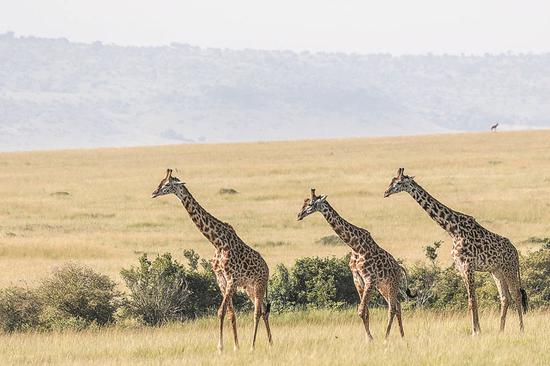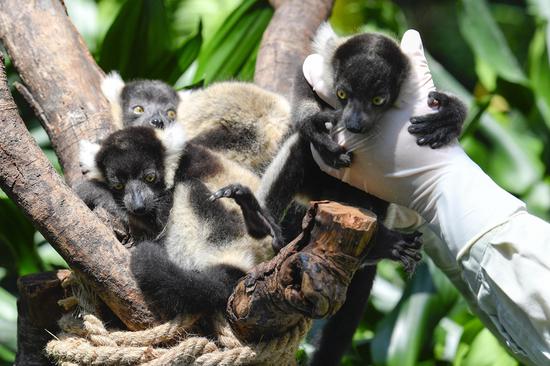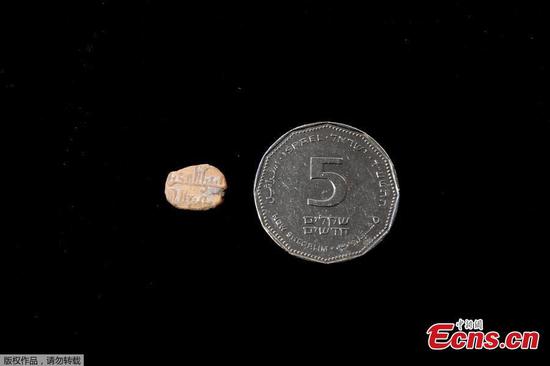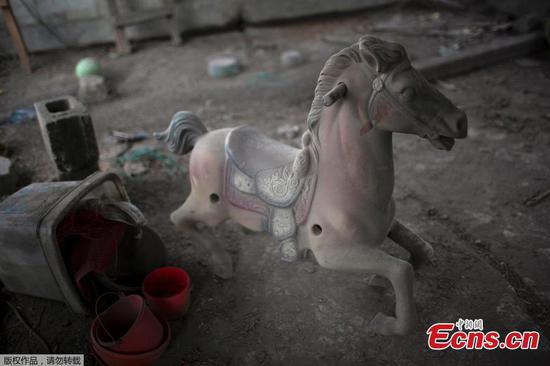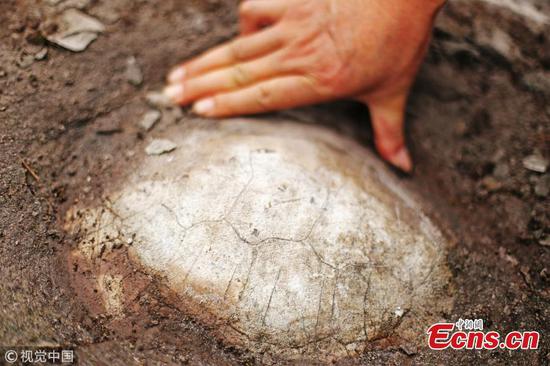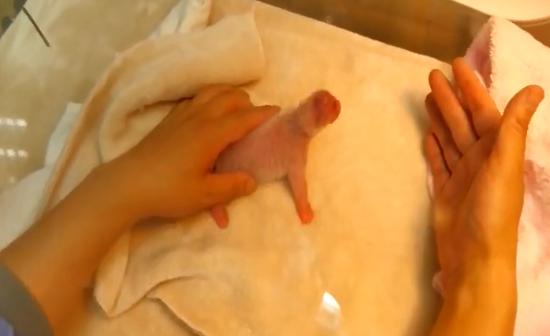
File Photo: Giant panda twins "Yu Bao" and "Yu Bei" play at Chongqing Zoo in Chongqing, southwest China, July 11, 2017. (Xinhua/Tang Yi)
Chinese scientists have found an ancient panda, belonging to a distinct group not found today, separated from present-day pandas 144,000 to 227,000 years ago.
In a study published on Monday in the journal Current Biology, they analyzed ancient mitochondrial (mt) DNA isolated from a 22,000-year-old panda found in Cizhutuo Cave in the Guangxi Zhuang Autonomous Region in south China, a place where no pandas live today and revealed a new lineage of giant panda.
The newly sequenced mitochondrial genome represents the oldest DNA evidence from pandas, according to the study.
"Using a single complete mtDNA sequence, we find a distinct mitochondrial lineage, suggesting that the Cizhutuo panda, while genetically more closely related to present-day pandas than other bears, has a deep, separate history from the common ancestor of present-day pandas," said Fu Qiaomei from the Institute of Vertebrate Paleontology and Paleoanthropology under the Chinese Academy of Sciences.
Little has been known about pandas' past, especially in regions outside of their current range in Shaanxi, Gansu and Sichuan provinces in China. Evidence suggested that pandas in the past were much more widespread, but it's been unclear how those pandas were related to pandas of today.
In the new study, the researchers used sophisticated methods to fish mitochondrial DNA from the ancient cave specimen. That's a particular challenge because the specimen comes from a subtropical environment, which makes preservation and recovery of DNA difficult.
The researchers successfully sequenced nearly 150,000 DNA fragments and aligned them to the giant panda mitochondrial genome reference sequence to recover the Cizhutuo panda's complete mitochondrial genome.
They then used the new genome along with mitochondrial genomes from 138 present-day bears and 32 ancient bears to construct a family tree.
Their analysis showed that the split between the Cizhutuo panda and the ancestor of present-day pandas went back about 183,000 years.
The Cizhutuo panda also possesses 18 mutations that would alter the structure of proteins across six mitochondrial genes.
The researchers said those amino acid changes may be related to the ancient panda's distinct habitat in Guangxi or perhaps climate differences during the Last Glacial Maximum.
The findings suggested that the ancient panda's maternal lineage had a long and unique history that differed from the maternal lineages leading to present-day panda populations.
According to the researchers, their success in capturing the mitochondrial genome also suggested that they might successfully isolate and analyze DNA from the ancient specimen's much more expansive nuclear genome.
"Comparing the Cizhutuo panda's nuclear DNA to present-day genome-wide data would allow a more thorough analysis of the evolutionary history of the Cizhutuo specimen, as well as its shared history with present-day pandas," Fu said.










